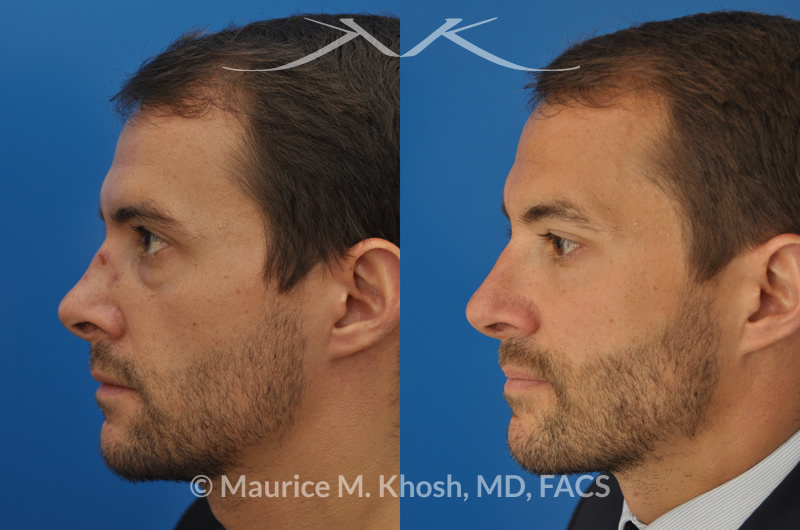A broken nose, medically termed a nasal fracture, is a common injury that can result from various causes, such as contact sports, accidents, or altercations. While most nasal fractures heal within a few weeks, some individuals may experience lingering issues or complications years after the initial injury. This article delves into the long-term effects of a broken nose and explores treatment options to address these persistent problems.

Image: www.pinterest.com
Types of Long-Term Issues
A broken nose can potentially lead to several long-term issues, including:
- Nasal Obstruction: Nasal fractures can sometimes cause the nasal bones to shift out of place, resulting in airway obstruction. This can lead to difficulty breathing, snoring, and sleep apnea.
- Deviated Septum: The nasal septum, a thin wall of cartilage that divides the nasal cavity into two passages, can be shifted or deviated as a result of a broken nose. This deviation can lead to nasal congestion, sinus infections, and difficulty breathing.
- Facial Deformity: A severely broken nose can cause facial deformities, altering the appearance of the individual. This can impact self-confidence and social interactions.
- Chronic Pain: Some individuals may experience chronic pain or headaches due to nerve damage or pressure on the nasal bones.
Treatment Options
If you are experiencing persistent nasal issues years after a broken nose, seeking medical evaluation is crucial. Depending on the specific problem, various treatment options may be considered:
- Nasal Reconstructive Surgery: This surgical procedure aims to correct nasal deformities or fractures that have not healed properly. It involves reshaping the nasal bones and cartilage to restore normal function and appearance.
- Septoplasty: This surgery focuses on repairing a deviated septum, which can obstruct the nasal airway. It involves straightening the septum to improve breathing and alleviate associated symptoms.
- Turbinate Reduction: If nasal congestion persists despite other treatments, turbinate reduction may be an option. This procedure involves reducing the size of the turbinates, which are soft tissues inside the nasal cavity.
- Sinus Surgery: For individuals experiencing chronic sinus infections related to a broken nose, sinus surgery may be necessary. This involves opening and draining the sinuses to restore proper function and prevent further infections.
- Medications: In some cases, medications such as nasal sprays or decongestants may be recommended to manage symptoms of nasal obstruction or allergies.
Prevention
While not all broken noses can be prevented, some precautions can reduce the risk of long-term complications:
- Wear protective gear in sports or activities where facial injuries are possible.
- Avoid physical altercations that could lead to facial trauma.
- Seek prompt medical attention for nasal injuries to ensure proper diagnosis and treatment.

Image: www.facedoctornyc.com
How To Fix A Broken Nose After Years
Conclusion
A broken nose can have lasting effects years after the initial injury. If you are experiencing persistent nasal issues or complications, it is essential to consult a healthcare professional for evaluation and treatment options. Advanced surgical techniques and non-surgical interventions can effectively address these long-term problems, restoring nasal function and improving overall well-being. By understanding the potential complications and taking preventive measures, you can mitigate the risks and improve your chances of a successful recovery from a broken nose.